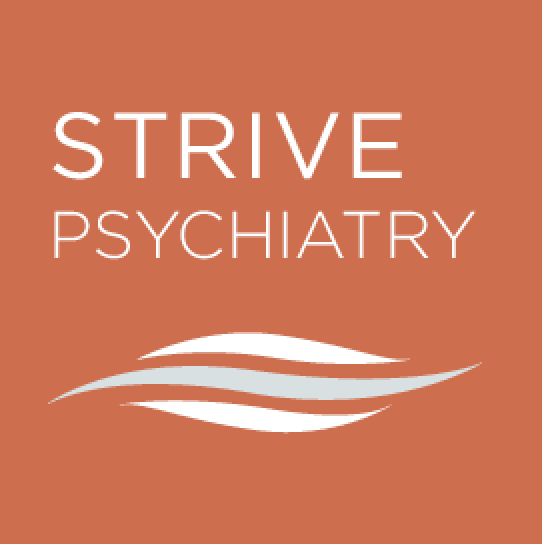Information is more accessible than ever before. Gone are the days where a person would have to scan through piles of books or get their information from news outlets. While these are still methods of gathering information – they aren’t the only ones. A simple search on Google yields thousands of results on practically any topic. While this is a wonderful tool – it can be a double-edged sword. As quickly as accurate and educational information spreads, misinformation spreads just as fast and can be terribly damaging. One example of this is the perpetuation of major mental health myths. In an effort to combat these, we have put together the top 10 myths about mental health that we see every day. Not only will we break down these myths, but we will also bring to light the truth about each one.
Major Mental Health Myths
1 – It is not common for children to have a mental illness
The Truth
Children and teens are often labeled as “attention-seeking” or their behavior is blamed on “raging hormones.” These labels are often to their detriment. According to the National Institute of Mental Health (NAMI) – “50% of all lifetime cases of mental illness begin by age 14 and 75% by age 24.” Even more shocking is that suicide is the second leading cause of death for youths between 10 and 24. 90% of those had an underlying mental condition. Not only is this one of the mental health myths that is totally wrong, but it can also prevent children from seeking help.
If your child or a child you know shows symptoms of a mental illness, it is important to take them seriously. They may even simply tell you they are depressed, scared, or anxious. It is important to validate their experience and get them help.
At Strive Psychiatry, we have doctors that specialize in treating children and adolescents. Click here to learn more.
2 – Mental illness is caused by bad parenting
The Truth
This myth has been around for a while and comes up for many reasons. The shock of discovering one has a mental illness leads to asking the crucial question of “how?” While there are many factors that mix together to develop a mental illness, the mixture itself is unique to each patient. Some factors that increase chances of developing mental illnesses include:
- Genetics
- Upbringing
- Trauma, or experiencing traumatic events
- Abuse
- Chronic illness
- Unhealthy habits
- Stressful lifestyles
- Brain Chemistry
- Brain injury
- Familial/Societal/Cultural expectations
- Prenatal Development
- Substance abuse
It is not common for only one thing to trigger a mental illness, rather a combination of complex factors. Because of this, treatment should be customized to each individual person, and it is important to not blame yourself or others for the development of a mental illness.
3 – Antidepressants are the only treatment for depression
The Truth
Antidepressants and talk therapy are, often, the first treatment for those with depression. While these are all some people need, every person is different. When first-line treatments fail to improve depression, there are many other options that are broken down below.
TMS Therapy
Pros
- FDA Cleared
- No medication
- No surgery
- Covered by most insurances
- Highly Effective
- Minimal side effects
Cons
- Must commit 30 minutes a day, 5 days a week, for 5-7 weeks
Ketamine
Pros
- Fast-acting (some patients find relief in the first 24 hours.)
- No Surgery
- Highly Effective
Cons
- Side effects like nausea and dissociative episodes
- Not covered by insurance (depending on how Ketamine is administered, it can be quite expensive.)
- Office visits are generally long, lasting anywhere from 1-2 hours
Vagus Nerve Stimulation
Pros
- Requires minimal follow-up visits
- Low maintenance
Cons
- Less effective
- Not often covered by insurance
- The device is surgically implanted
ECT
Pros
- Most effective depression treatment
- Covered by most insurance companies
- Fairly fast-acting (some patients find relief by their first week of treatment.)
- When done by professionals, the procedure is very safe
Cons
- Side effects include memory loss
- Patients may not drive or operate heavy machinery for 24 hours post-treatment
- Confusion, muscle aches, and nausea are common after each ECT session
We made a blog post dedicated to alternative treatments for depression – check it out here if you want to learn more!
4 – Mental Illness leads to violence
The Truth
This unfortunate stigma was perpetuated in movies and TV shows. This mental health myth could not be further from the truth. Studies show that those with mental illness are no more violent than the general public. Taking this a step further, those with mental illnesses are often victims of violence. The biggest problem with this stigma is that it leads to ostracising people with mental illnesses – especially those with conditions like schizophrenia, bipolar disorder, or psychosis. Those with these conditions may feel shame so heavy it prevents them from seeking help and getting better. This is why it is of the utmost importance to treat others with kindness and compassion – whether they are mentally ill or not.
5 – Schizophrenia makes you have multiple personalities that argue with each other
The Truth
Schizophrenia is often confused with Disassociative Identity Disorder (previously known as Multiple Personality Disorder.) While this is a common mixup, a little research can easily set the confusion straight. Here is the quick information on each of these distinctly different disorders
Schizophrenia
Schizophrenia is characterized by a disconnection from reality. Those with this illness report hearing voices, having visual hallucinations, delusions, or even catatonia. It is treated effectively with medication and inpatient care given by mental health professionals.
“If properly treated, a peer would never know one suffers from schizophrenia.” – Dr. Andrea Farmer, Strive Psychiatry.
Disassociative Identity Disorder
Dissociative Identity Disorder is characterized by a person having at least 2 distinctly different personality states. Often, there are gaps in memory when an individual alters from one personality state to another. Each personality can have a completely different perception of the world like a different name, history, and personality traits. Many doctors believe that this extremely rare disorder is a way of dealing with trauma.
6 – You can’t have a job if you are mentally ill
The Truth
While mental illnesses can negatively impact daily function, it does not always equal an inability to complete tasks and hold a job. A national survey found that, while employment rates decreased when a mental illness was present, that decrease was small. Of those with no mental illness, 75.9% were employed. For those with mild mental illness, that number was 68.8%, while moderate severity was 62.7%. Most surprising of all, 54.5% of individuals with a serious mental illness were employed. Clearly, having a mental illness does not mean a person cannot have a job.
7 – Personality disorders aren’t mental conditions – they are behavioral flaws
The Truth
Personality disorders and behavioral flaws are very different. Every person has flaws of some kind. While saying the wrong thing at a dinner party can leave a person feeling bad, a personality disorder is markedly different. These disorders are characterized by pervasive, debilitating behaviors that differ significantly from what is expected. For some, behavioral flaws can be taken care of without help, but personality disorders typically need treatment from a mental health professional.
8 – You never need medicine or therapy for a mental illness – you can get over them yourself
The Truth
Like we mentioned earlier, there are many factors that influence the development of a mental illness. While many people find positive thinking, meditation, or a dietary change helps to improve their mental health, it may not be enough to help someone out of a mental illness. We all have low points. During these times it is common to have symptoms of depression, anxiety, or other mental conditions, but low times come and go. A mental illness tends to stick around, especially if there is a chemical or physical element to the condition. The main point to take from this is that mental illness is complex and affects each person differently – treatment methods that work well for one person won’t always work for another.
9 – Talking to children about suicide will put suicidal ideas into their head
The Truth
Many mental health myths stem from a good place, and this one is no exception. Parents and teachers are wary about talking suicide with children. While it is good to respect the heaviness of this topic, it is important to not let caution prevent a healthy conversation. Studies show that talking with a child about suicide does not increase their chance of completing suicidal acts. Some evidence even suggests that it decreases their chances, which further emphasizes the importance of communicating openly and honestly with children about suicide. Here is a quick list of how to do this with a child’s age in mind.
Age Appropriate Messaging
- For young children, it is important to keep explanations clear and simple. For example, “Some people are very sad and have a sickness in their brain. Sometimes these people die, and that is a very sad thing.” Be sure to talk about how mental illnesses are just like physical ones and anyone can go to a doctor for help.
- For Pre-teens, it is possible to go into a little more depth. Emphasize the importance of communication and telling an adult if they hear a friend talk about wanting to die. Teach the signs of suicidal ideation (giving away possessions, feeling sad all the time, self-harm, etc.)
- For teens, be sure to touch base regularly with their mental state. Break down stigmas and let them know that you will love and support them no matter what. Expand on what you spoke about during their pre-teen years, and add on symptoms and treatments for depression. At this point in their development, the odds they know someone who has a mental illness are pretty good. Have them save the Suicide Prevention Lifeline as a contact on their phone, or have them download an app like SafeUT.
These little conversations can go a long way to helping a child understand suicide, as well as take a proactive approach to prevent it.
10 – You cannot recover from a mental illness
The Truth
Many confuse chronic conditions with untreatable conditions. While chronic conditions last at least a year (and at most a lifetime) it doesn’t mean they are not treatable. In fact, all mental illnesses are treatable. However, it is important to point out that recovery looks different for everyone. Some define recovery as a return to how they were before their condition. Others consider recovery the state at which their symptoms are manageable. For a few, there was no “normal” before their mental illness and they have to work to create a fulfilled and complete life. No one’s recovery journey is linear or will be the same as another person’s recovery journey, but this does not mean that recovery is not possible. There is always hope for a light at the end of the tunnel. With proper treatment, that light gets brighter every day.
Myths = Busted
There are tons of mental health myths available in our day-to-day life. We hope that this post has shed some light on some of the most popular ones. It is important to use the truths found in this post to treat others with kindness and compassion. Together, we can all take steps to break down mental health stigmas and change the conversation about mental health.

